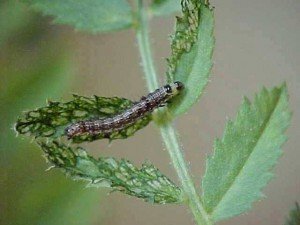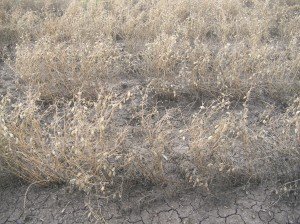With some chickpea crops being sprayed out, rather than harvested, there are reports of helicoverpa larvae surviving on crop residues. The survival of larvae, particularly large late instar larvae, poses a threat to subsequent crops that may be sown directly into the chickpea residues. It is important to check for surviving larvae under the chickpea residues before the next crop starts to emerge.

Emerging seedlings are very susceptible to helicoverpa feeding, and helicoverpa will attack all summer crops.
While we don’t recommend the use of herbicides for the control of insect pests, herbicides may have some impact on helicoverpa larvae. In the late 1990s, we observed that Sprayseed® applied to finish off chickpea trap crops also killed helicoverpa larvae, but such observations need to be confirmed with further data. We don’t have any observations on the impact of other herbicides on helicoverpa, so it remains important to check the crop residues. Please report any suspected larval deaths (due to herbicides) to our team via the blog.

Article by Melina Miles
